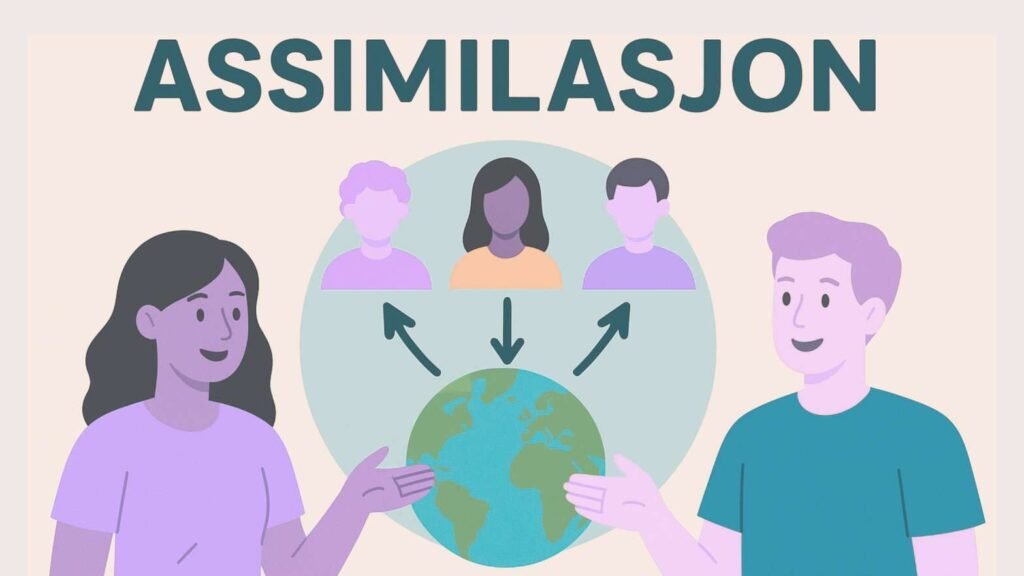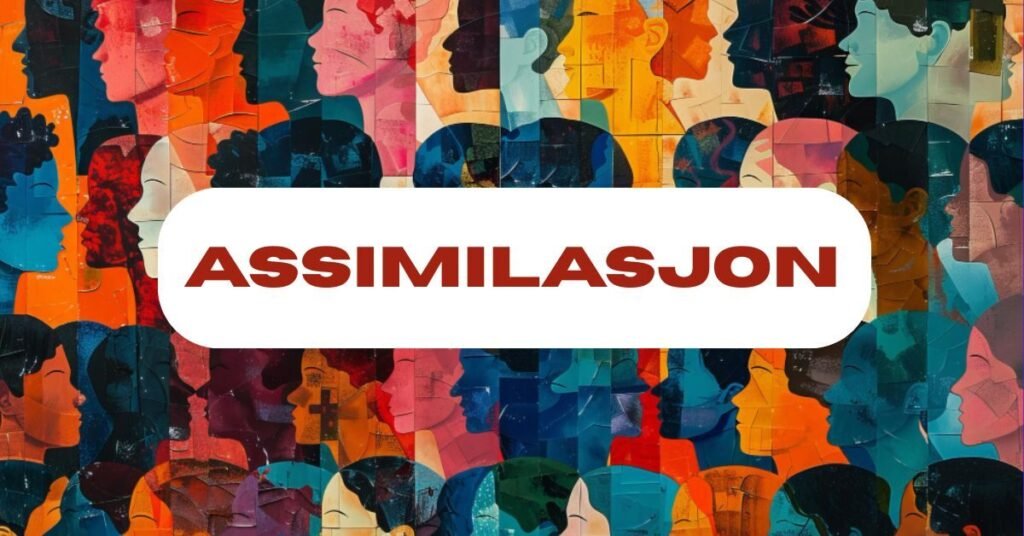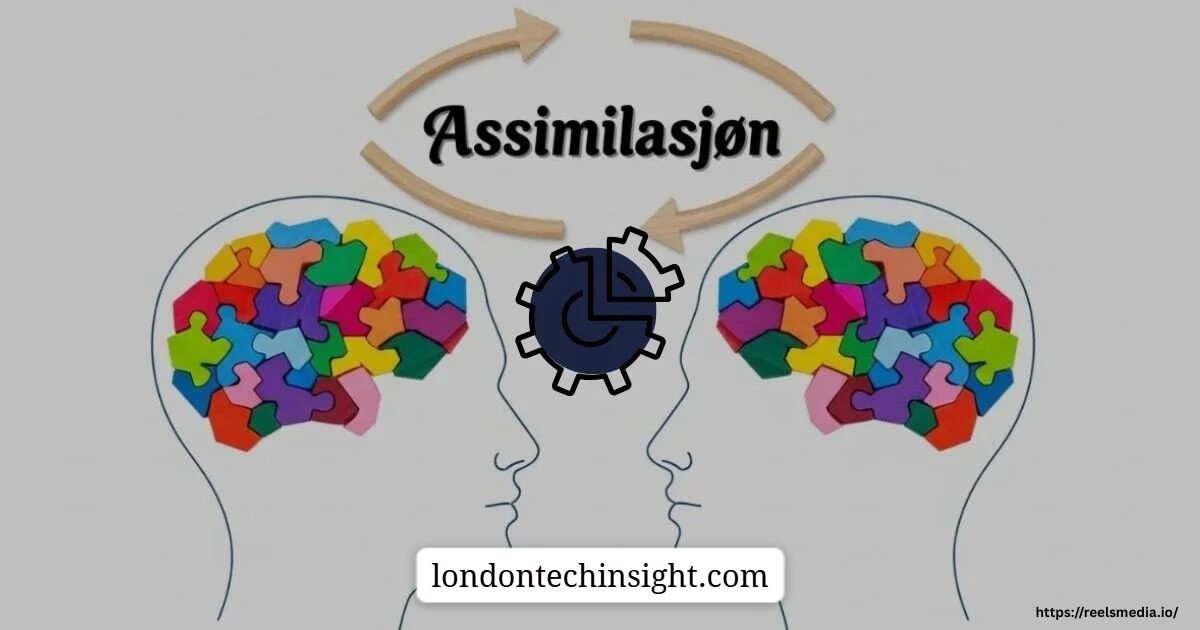Introduction
Concept of Assimilasjon – A word in Norwegian language for “assimilation” – is one of the most widely debated subjects in cultural studies, sociology and politics. At its core, it describes the process where individuals or groups with different cultural backgrounds adapt and are gradually integrated into the major culture of a society. Although this idea may seem straightforward, Asimilasjone is borne with layers of historical complexity, political stress and social change.
It has shaped nations, affects migration policies, and has determined how minority communities get their place in broad societies. For centuries, assimilation has been seen as an opportunity for unity and as a source of cultural loss, raising important questions about identity, related and diversity. This article will detect the modern implications of deep history, mechanisms, challenges and assembluszone, allowing readers to wide understanding of its real world.
Table of Contents
What is Assimilasjon and Why Does It Matter?
Assimilasjon refers to the process in which minority groups or individuals adopt the language, values, customs and practices of the major culture. This process is often associated with migration, colonization or social integration after conflict. However, the importance of asimilasjone is not only in understanding the transfer of cultural practices, but also to identify the balance between preserving identity and promoting unity.
Some societies encourage to assimilate as a way to ensure national harmony, while others prioritize multiculturalism, allowing various cultural groups to survive shoulder to shoulder without pressure. The debate center is whether assimilation strengthens or weakens societies in the long run, as integration can promote stability, but can also erase unique cultural traditions.
Historical Background of Assimilasjon
Throughout the history, Essimilasjone has taken many forms, from voluntary adaptation to forced assimilation. In Europe, indigenous groups such as SHorway and Sweden were subjected to assimilation policies, often lost their languages and traditions under pressure from state institutions. Similarly, in North America, native American communities faced boarding school systems designed to suppress indigenous languages and replace them with English.

On the other hand, assimilation has also been a natural consequence of trade, migration and contradiction. For example, in the early 20th century, immigrants in the United States often adopted English and American customs, holding pieces of their original traditions. These examples suggest that Asimilasjone is neither a unique phenomenon nor a similar process – it is shaped by reference, dynamics of power and cultural flexibility.
Mechanisms of Assimilasjon in Modern Societies
Today assimilating can occur in subtle and complex methods. Instead of more than policies, society now rely on institutions and social norms to encourage integration. Education systems, workplace cultures, and media representation play an important role in shaping how immigrants and minority communities.
Language acquisition is the strongest factor in assimilation, as it affects access to jobs, education and civil participation.
Social networks act as bridges, help minorities to adapt through friendship, mentorship and shared experiences.
Economic participation provides individuals an opportunity to integrate in mainstream structures while maintaining cultural roots.
Media and technology assimilate individuals by highlighting cultural values and practices at a fast pace.
However, this process is not always smooth. Ibreap can create internal conflict, where individuals feel caught between two cultural worlds, or external stresses, when major groups make unrealistic expectations on minorities.
Assimilasjon vs. Integration: Understanding the Difference
Many confuse assimilasjon with integration, but the two concepts are not identical. Integration allows minority groups to participate in society while retaining their cultural identity, whereas assimilation often implies a complete absorption into the dominant culture.
| Aspect | Assimilasjon | Integration |
| Cultural Identity | Often diminished or replaced | Preserved alongside national identity |
| Social Expectation | Pressure to conform to majority norms | Encouragement of diversity and coexistence |
| Outcome | Homogeneity in culture | Pluralism within unity |
| Example | Native groups losing language to majority | Migrant communities maintaining traditions |
This distinction is crucial because it reflects broader debates about how societies envision multiculturalism and national unity.
Challenges of Assimilasjon in the 21st Century
In the modern era, assimilation has become more complicated due to globalization, migration crisis and developing national identity. While some countries promote multiculturalism, others bends towards strict assimilation policies.

One of the biggest challenges is a dilemma of identity faced by immigrants. While individuals from the second generation may feel more assimilated than their parents, they often struggle with the major culture being fully accepted. Furthermore, forced assimilating – such as pressurizing individuals to leave their original languages - increases moral concerns.
In addition, digital globalization makes it difficult to be absolute to assimilate. Social media allows minority communities to remain connected to their cultural roots, creating a hybrid identity that challenges the traditional assimilation models.
Positive Aspects of Assimilasjon
While Asmita has been often criticized, it can also benefit even by contacting morally.
It can create social harmony by reducing obstacles between groups.
Intimotion often facilitates dynamics upwards, allowing immigrants to grow in education and employment.
In some cases, assimilation community re -shapes the major culture, enriching it with new traditions, foods and values.
It is important to ensure that it is not assimilated, but is chosen, enabled individuals to balance their heritage with social participation.
Case Studies of Assimilasjon
Assimilasjon in Scandinavian Countries
Scandinavia provides an example of assimilation policies. Norway, Sweden and Finland historically pushed sir to assimilate people, causing significant cultural losses. Today, however, these governments are working to revive life languages and traditions, which accept the damage caused by earlier policies.
Immigrant in the United States
U.S. In, Esmilaszone is associated with a long -standing “melting utensils”, where migrants from Europe, Asia and Latin America have adapted to American culture. While many groups successfully assimilated, others faced discrimination, exposed the uneven nature of the process.
France and its secular assimilation
France adopts a strong identityist approach, emphasizing secularism and an integrated national identity. It often struggles with immigrant communities that demand to preserve religious and cultural practices, increasing national debate about freedom and equality.
The Future of Assimilasjon
Further, Assimilasjon will develop under the influence of globalization, climate-intensified migration and shifting demographics. Hybrid identity is likely to be more common, where individuals are neither fully assimilated nor completely separated, but exist in a dynamic cultural balance. Governments and societies will need to decide whether to assimilate equally through integration or push to embrace pluralism.
The most permanent future lies in finding a balance – accepting the shared values required for national unity, celebrating the cultural diversity that enriches human societies.
The Nature of Assimilasjon
At its core, assimilasjon is about change. Minority groups adopt customs, language and behavior of major cultures, either by choice or through external pressure. It can bring practical benefits – better jobs, education access and social acceptance – but can also give rise to loss of ancestral traditions. This dual effect makes Esmilasjone both essential and problematic.
Some societies assimilate as a natural path for national unity, while others value multicultural co -existence, allowing communities to maintain their heritage.
Historical Perspectives
History provides many examples of Asimilasjone, from voluntary adaptation to applicable policies. In Scandinavia, people were once pressurized to quit their languages in favor of national languages. In the United States, in the early 1900s, the waves of immigrants quickly adapted to the “American” culture while maintaining pieces of their old identity.
These examples suggest that the asmilasjone is not one-dimensional-it may be strong for something but destructive to others.
Modern Challenges of Assimilasjon
Today, Assimilasjon faces new complications:
Globalization: Pravasi communities are connected to their roots through digital media, which reduces complete assimilation.
Identification Conflict: Second generation immigrants often find themselves between two worlds-so are fully accepted.
Political debate: Some countries demand a strong assimilating, while others promote pluralism, discuss immigration and related to related.
These challenges throw light on the fact that it cannot be assimilated in simple words of success or failure.
Assimilasjon vs. Integration

Although people often confuse asmilasjone with integration, they are not the same. I was an assimilation, with major cultural practices, goes to change minority identity, while integration allows variety within unity. A society that only assimilates the risk of losing cultural prosperity, while integration encourages co -existence and shared participation.
Looking Ahead
The future of assimilasjon will likely be hybrid in nature. Instead of one culture replacing another, individuals may carry dual or multiple identities. For example, young immigrants in Europe might speak both their family’s native language and the national language, blending traditions into something new. This shows that assimilasjon does not always erase—it can also create.
Conclusion
Assimilasjon is a powerful and complex process that has shaped societies throughout history and continues to affect the present. While it can promote unity and create opportunities, it also carries the risks of cultural elimination and identification struggles. The real challenge is not in deciding what to assimilate, but how it is managed.
Ibbuting societies often face resistance and division, while those who promote voluntary and respectable adaptation create strong, more inclusive communities. In today’s mutual connected world, the argument around Empilasjone will remain central, reminding us that the cultural identity is not stable, but is developing through frequent interactions, adaptations and flexibility.
FAQs
1. What is the main difference between assimilasjon and integration?
Assimilasjon often means complete absorption in major culture, while integration allows cultural diversity within an integrated society.
2. Why is Asimilasjone controversial in history?
It is sometimes forced, which suppresses indigenous languages and traditions, causing long-term cultural damage.
3. Can Asmilson benefit immigrants?
Yes, when voluntary, it can improve access to education, jobs and social opportunities, while promoting the concerned.
4. How does globalization affect Empiralsjone?
Globalization and digital connectivity allow minority groups to maintain relations with their cultures, creating hybrid identity rather than assimilating.
5. What is the future approach of Essimilasjone?
Future trends point to hybrid cultural models, where individuals are compatible with major societies while maintaining aspects of their heritage.
Also Read This: Florncelol Technology Insights for a Smarter Future 2025
